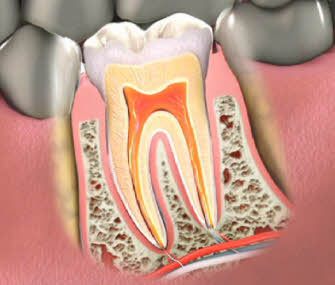Just hearing the words “root canal” seems to strike fear in many people. Click image above
In reality, root canal therapy is simply a procedure performed to save a severely compromised tooth and is not as scary or painful as you might imagine. Symptoms that may indicate the need for root canal treatment include:
- Excessive pain when biting or applying pressure to the tooth
- Sensitivity to extreme temperatures for an extended time
- Darkening or changes in coloration of a tooth that has suffered some type of trauma
- Swelling or tenderness of the gums
- Constant or reappearing blister on the gum area
Root canal therapy is recommended when a tooth has severe decay or infection, leading to damage to the nerve or pulp of the tooth. Before the procedure, your dental professional will numb the area with a local anesthetic, and may also offer sedation options like nitrous oxide or oral sedation. These measures will help to minimize any pain and keep you relaxed and comfortable during root canal treatment.
During the procedure, the nerve and pulp are removed and the inside of the tooth is cleaned and sealed. This treatment stops the spread of infection that can damage surrounding healthy teeth. Removing the pulp also helps to prevent a painful abscess in the tooth.
Once the pulp is removed and cleaned, your dentist will fill the inside of the tooth with medicines and then place a temporary filling in the space left by the missing pulp. Finally, a permanent filling or crown will be placed. Any discomfort or pain you feel in the few days after root canal therapy can be easily managed with over-the-counter pain medication.
The goal of root canal therapy is to eliminate the infection or decay and save your natural tooth. The truth is that root canal therapy will eliminate pain, not cause it.




